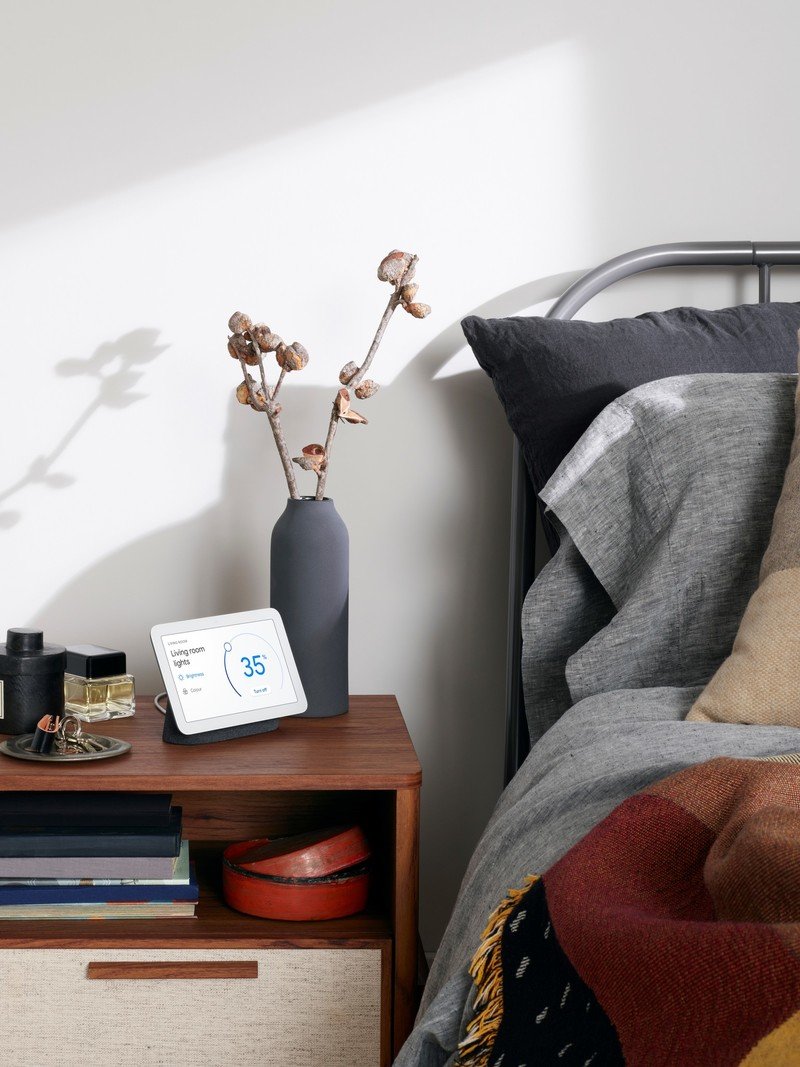New Google Nest Hub (2nd gen) uses Soli radar tech to help you get a better night's sleep

What you need to know
- The new 2nd-generation Nest Hub features new sleep tracking technology using Google's Soli radar tech.
- Google Nest Hub supports Motion Gestures and offers 50% more bass when listening to music.
- The new Nest Hub is available for preorder today for $99.
Today Google announced the second generation of its popular Google Nest Hub smart display. As one of the best smart displays on the market, the first-generation Nest Hub had a lot going for it, but Google is introducing a few welcome changes for this new version, from better audio to better sleeping and new ways to navigate your display.
Visually, the Nest Hub is more or less the same as the first version. The second-gen is more of a refresh than a complete overhaul, offered in four colors, including Chalk, Charcoal, Sand, and the new Mist. But while the outside remains largely unchanged, the inside includes several welcome upgrades, including a faster processor for smoother control.
When it comes to sound, Google takes some of the audio technology from its Nest Audio speaker and gives the new Nest Hub a boost. The company claims 50% more bass in the new Nest Hub, which should appeal to music lovers. And if you have any of the best Google Assistant Speakers, you can share audio between them and create groups that fill your home with sound.
The new Nest Hub also supports the new Connected Home over IP (CHIP) working group, which was first introduced in 2019. This new open-source connectivity standard allows private and secure communication between connected devices and should work more seamlessly than existing standards. It means a single standard that works with various networks and can open up homes to various platforms from Google, Amazon, Apple, and more. CHIP takes smart devices into the next decade, which means the new Nest Hub is more or less future-proof.
Of course, the biggest addition to the new Google Nest Hub is Sleep Sensing. It's a feature that's useful for users that don't own any of the best Android smartwatches that feature sleep tracking capabilities.
Using the radar-based Soli technology first introduced with the Google Pixel 4, the new Nest Hub can monitor your sleeping by analyzing your breathing and movements. Using various on-device sensors, it can tell whether you're snoring and even detect environmental changes to sound and light that may affect your sleep. And when you wake up, you'll get a visual summary to show you how you slept, or you can ask for it at any time.
Google wants owners of the new Nest Hub to understand their sleeping patterns better and figure out ways to improve their sleep. Over just a few days, Sleep Sensing can take data from your sleep patterns and recommend ways to improve your sleep, from scheduling to environmental improvements like adjusting your room temperature. It's an opt-in experience that Google insists protects your privacy by processing audio data on-device, and any data related to your sleep pattern can be viewed and deleted from Google Fit. Nest Hub also retains the mic switch, which you can turn off at any time.
Get the latest news from Android Central, your trusted companion in the world of Android
Another benefit of the new Soli technology is Motion Sense, which gives users access to touchless Quick Gestures for controlling things like playback. It may not have been as big of a feature on the Pixel 4 when it launched, but Soli may have found a more appropriate home with the new Nest Hub. Unfortunately, there is still no camera on this model like on the bigger Nest Hub Max.
The new Google Nest Hub is available to preorder today for $99 and will ship on March 30. Google also gives users free access to the Sleep Sensing "preview" until 2022 and will eventually integrate the service with Fitbit's own sleep tracking technology.

Pixel 4 tech finds a new home in your home.
The new Google Nest Hub may look the same as the first-generation, but changes under the hood mean it's more future-proofed to handle all your smart home needs. With better audio and radar-based sleep tracking, the new Nest Hub is the perfect bedside companion.

Derrek is the managing editor of Android Central, helping to guide the site's editorial content and direction to reach and resonate with readers, old and new, who are just as passionate about tech as we are. He's been obsessed with mobile technology since he was 12, when he discovered the Nokia N90, and his love of flip phones and new form factors continues to this day. As a fitness enthusiast, he has always been curious about the intersection of tech and fitness. When he's not working, he's probably working out.


